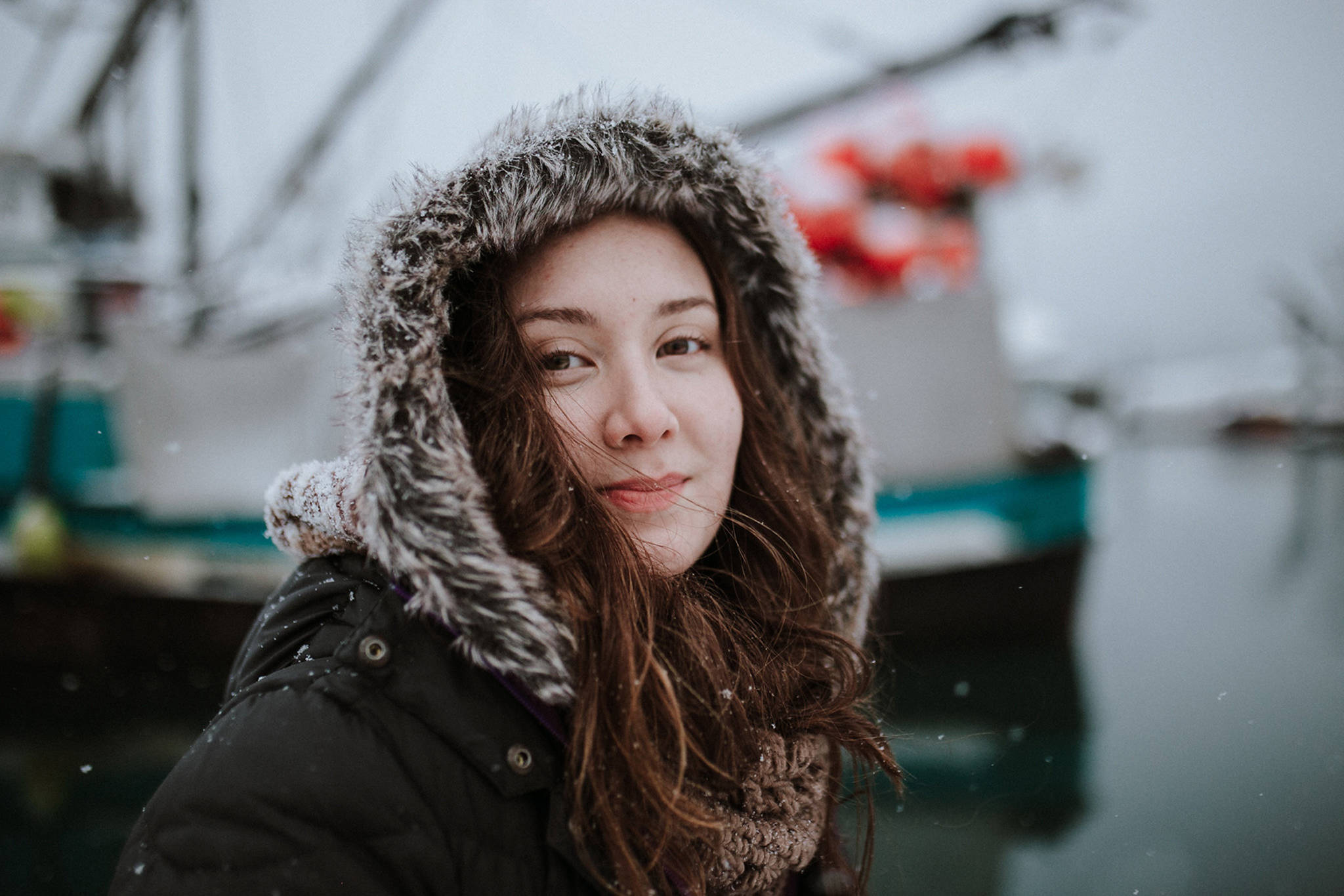How should a person visually tell the story of Salmon Boy, the traditional Tlingit tale of the child who flung away a moldy piece of salmon offered to him by his mother, offending the Salmon People — who, in response, swept him into their world?
“In watercolor” was the answer of Juneau artist Michaela Goade, whose Tlingit name is Sheit.een. She is from the Raven moiety and Kiks.ádi Clan of Sitka, and she was selected to illustrate three of the Sealaska Heritage Institute’s Baby Raven Reads books, designed to promote language development in Alaska Native children. Goade’s illustrations are featured in “Let’s Go! A Harvest Story,” “How Devil’s Club Came to Be,” and “Shanyaak’utlaax: Salmon Boy.” Because of Goade’s art, “Salmon Boy” just won the 2018 American Indian Youth Literature Best Picture Book Award from the American Indian Library Association (AILA). The text was edited by Johnny Marks, Hans Chester, David Katzeek, and Nora and Richard Dauenhauer.
In her artistic statement in the book, Goade wrote: “When I first read the text for this Kiks.ádi story, I happened to be in Sitka visiting my parents. I felt a powerful combination of gratitude and magic as I strolled through Totem Park, traditional Kiks.ádi land, and asked for inspiration as I began to create the visual journey of Salmon Boy.”
At the time, she had been admiring the watercolors of other artists, and so she decided to try her hand at it too. It’s funny, she said, that she used watercolor for the book since it wasn’t a medium she had experimented with much previously.
“Watercolor had always been a little bit daunting to me,” Goade said.
Daunting, perhaps, but the results of her efforts speak for themselves. The images in her book demonstrate an eye for detail and color; she has brought Southeast Alaska to life on the page. Her outdoors scenes are particularly mesmerizing. With her brush, she grew a forest of evergreens lining hills across the water; she also created intricate line art in the ocean for a splash of character unique to her work. She used a combination of watercolor, gouache (a kind of opaque watercolor), and digital editing techniques with the goal of creating “a dream-like and somewhat stylized world that reflects the magic of Tlingit storytelling, while staying true to a classic Kiks.ádi tale.”
Goade likes to spend time outside when she can. Keeping her smart phone handy to snap photos of scenery for reference photos has been a help. When she was working on “Let’s Go! A Harvest Story” she started around springtime and took note of what plants were growing where and when. She doesn’t have to be outside, though, to draw inspiration from Southeast. Sometimes she likes to just look outside her studio window. This place is an easy one to be inspired in, she said.
Her artistic skills come from years of practice.
“I was involved in art in some form or another for a very long time,” she said. “I don’t remember a lot from elementary school but I do remember all of our art classes and art projects.”
She took classes through high school. By the time college rolled around, she knew she wanted to pursue a creative major — whether a basic art degree, theater or scenic design, she wasn’t certain. When she took graphic design classes, she knew she had found the “happy medium of creativity and analytical thinking,” and so she completed a bachelor’s in graphic design and marketing from Fort Lewis College while taking classes like painting, drawing, and printmaking on the side. After graduation, she spent two years in Anchorage as an art director for Yuit Communications, honing her skills from college. She frequently did freelance work on the side, and because she missed Southeast Alaska, she decided to make the jump to being a full-time freelance artist in Juneau.
She balances between her personal art, graphic and art commissions from clients, and illustrating. The Baby Raven Reads books were her first, though not her last; she is working on upcoming Baby Raven Reads books too. She’s done design work for many Alaska businesses, like Alaskan Brewing Company, Alaskan Marine Conservation Council, Alaska Seafood Marketing Institute, and Salt & Soil Marketplace. She’s developing her online store to sell prints of her personal work as well, keeping her quite busy.
Working as a full-time artist has taught her how to value her work and to be an advocate for herself because “no one is going to do it for you.”
“I think something that really helps me when I get really stressed out with all of those issue regarding pricing and contracts is that artists tend to be the first to undervalue their work, and to be their worst critic, and to be the first one to go ‘Oh no, you don’t need to pay me that much for that. That’s art, that’s creativity.’ It can be hard to put a monetary value on it, so I think one of the most helpful things for me has been to try hard to give yourself credit where credit is due and not undervalue your work,” she said.
Find out more about Goade on Instagram, Facebook and michaelagoade.com.
• Clara Miller is the staff writer for the Capital City Weekly.

